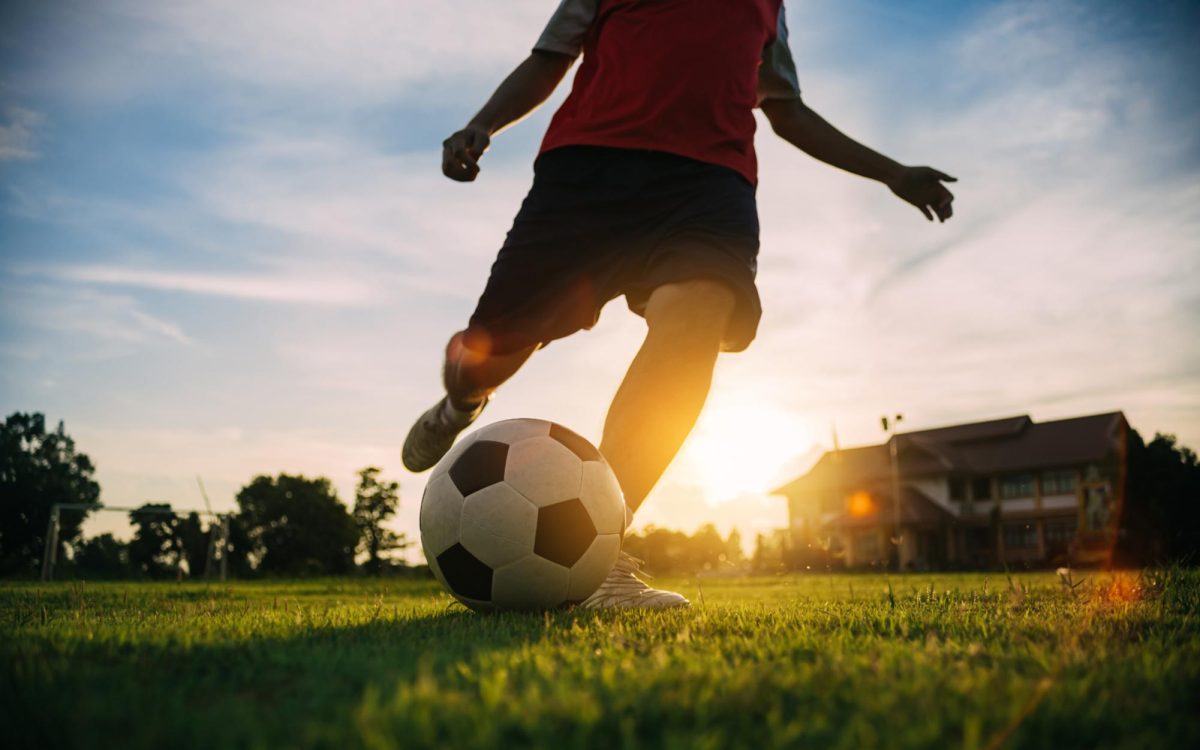In today’s competitive youth sports landscape, injuries are common, and when they do occur, young athletes are often pressured to play through the pain.
“The back-to-school season is prime time for foot and ankle injuries from fall sports like soccer, football and cross country,” says Richard Baker, DPM, FACFAS, a foot and ankle surgeon and Fellow Member of the American College of Foot and Ankle Surgeons (ACFAS). “Fortunately, there are many steps parents, coaches and young athletes can take to prevent injuries from occurring in the first place and to discourage kids from playing through pain.”
Here are eight play-it-safe tips from the foot and ankle surgeon members of ACFAS to help prevent injuries and to treat them properly when they do occur.
1. Get a pre-season checkup. A pre-season medical evaluation can help identify whether your child could possibly benefit from using an orthotic or wearing a supportive ankle brace while playing. This is especially important for those with previous sprains and injuries.
2. Start the season with new shoes. Old shoes can wear down and become uneven, causing the ankle to tilt. And, as your child’s feet may have grown between seasons, their old shoes may not fit. The smart move is to replace athletic shoes at the start of each season. While children under 10 should wear all-purpose sports shoes, older youth athletes should wear sport-specific footwear.
 3. Train for the season. It’s important that your child’s feet and ankles are accustomed to the level of activity required for the sport. Adequate conditioning in the off-season can help maintain a player’s ability to meet these demands, reducing their risk of injury and improving their performance during the season.
3. Train for the season. It’s important that your child’s feet and ankles are accustomed to the level of activity required for the sport. Adequate conditioning in the off-season can help maintain a player’s ability to meet these demands, reducing their risk of injury and improving their performance during the season.
4. Encourage warmup exercises. Calf stretches and light jogging before competition help warm up ligaments and blood vessels, reducing injury risk.
5. Check fields for dips, divots and holes. Ninety percent of ankle sprains are due to poor playing conditions. That’s why some surgeons recommend walking the field, especially in non-professional settings like public parks, looking for spots that could catch a player’s foot. Alert coaching officials to any irregularities.
6. Watch their technique. A difference in the way your child is moving is often a tell-tale sign that something is wrong. Playing with pain is never a winning strategy so encourage kids to be honest about pain or discomfort.
7. Be mindful of other physical activities. Your child doesn’t need to be involved in a formalized athletic program to be vulnerable to sports-related injuries. Foot and ankle surgeons warn of common injuries like plantar fasciitis, bone spurs, fractures and Achilles tendonitis due to repetitive, forceful motions, which can occur in activities such as skateboarding. When skateboarding or engaged in other non-formal activities, always wear protective gear, including supportive shoes, and seek treatment when there is pain or injury.
8. Remember RICE. Often, an injured foot or ankle can be treated with rest, ice, compression and elevation. Those with foot or ankle pain should take a break from playing and allow time for recovery. If pain persists, something more serious may be happening, such as cartilage injuries or broken bones in the foot. Consult a foot and ankle surgeon for a complete evaluation, proper diagnosis and treatment plan. The sooner rehabilitation starts, the sooner your child can safely get back into the game.
For more information on pediatric foot care or to find a foot and ankle surgeon near you, visit FootHealthFacts.org, the patient education website of the American College of Foot and Ankle Surgeons.
To inquire about placing display advertisements and custom content with the North Coast Current and OsideNews, visit our Advertising page.




